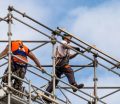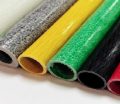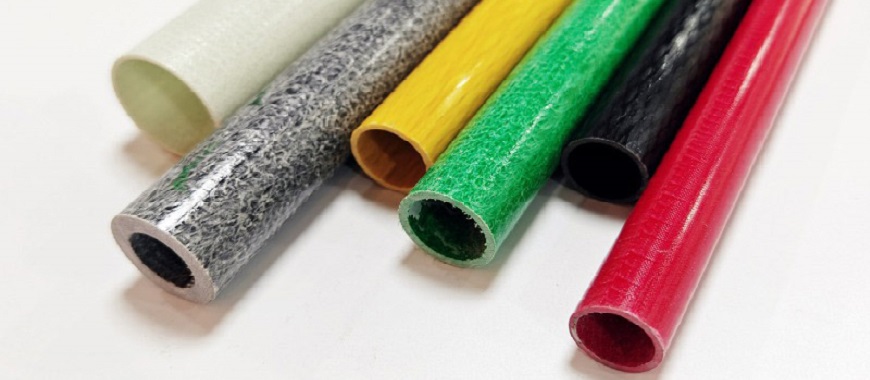
In the realm of construction and industrial applications, scaffolding stands as an indispensable structure, providing the necessary support and accessibility for workers to perform tasks at various heights safely. Traditionally, materials such as wood and steel have dominated the scaffolding landscape, each with its own set of advantages and limitations. However, as industries evolve and demand more versatile, cost-effective, and safer solutions, the introduction of fiberglass scaffolding tubes marks a significant leap forward. These innovative alternatives offer an array of benefits over their conventional counterparts, including enhanced strength, reduced weight, and improved resistance to corrosion and electrical conductivity. Notably, the advent of thin wall fiberglass tubing technology furthers the practicality of fiberglass in scaffolding, combining durability with lightweight properties to streamline construction and maintenance projects. Thin Wall Fiberglass Tube is made by the pultrusion process for just the ticket for applications that need to balance strength-to-weigh. This breakthrough positions fiberglass tubes as a compelling choice for contemporary construction and industrial tasks, paving the way for smarter, more efficient scaffolding solutions.
The Basics of Thin Wall Fiberglass Tube Scaffolding
Fiberglass scaffolding tubes, particularly those designed as thin wall fiberglass tubes, are revolutionizing the construction and maintenance industries. These tubes are made from fiber-reinforced plastic, a composite material that consists of a polymer matrix reinforced with fibers. The resultant product is a robust, lightweight tube ideal for various scaffolding applications.
What Are Fiberglass Scaffolding Tubes?
- Material Composition: Fiberglass tubes are composed primarily of fiberglass and resin. The fibers provide strength and rigidity, while the resin helps in binding the fibers and providing chemical resistance.
- Weight: Compared to traditional materials like steel and aluminum, thin wall fiberglass tubes are remarkably lighter, making them easier to transport and handle on site.
- Strength: Despite their lightweight, these tubes boast high strength-to-weight ratios, making them as strong, if not stronger than their metal counterparts.
- Corrosion Resistance: Unlike metal scaffolding, fiberglass does not corrode when exposed to harsh environmental conditions, making them more durable over time.
- Electrical Insulation: Fiberglass is a poor conductor of electricity, providing a safer alternative in environments where electrical hazards exist.
- Thermal Insulation: These tubes also inherently have low thermal conductivity, which minimizes the risks associated with temperature variations.
- Ease of Installation: The lightness and flexibility of fiberglass tubes make them easier to install and dismantle, reducing labor costs and saving time.
- Cost-Effectiveness: Over time, the durability and low maintenance requirements of fiberglass can lead to lower overall costs compared to steel or aluminum scaffolding.
Comparison with Traditional Materials
To provide a clearer comparison between thin wall fiberglass tubes and traditional materials like steel and aluminum, the following table is presented:
| Feature | Thin Wall Fiberglass Tube | Steel | Aluminum |
|---|---|---|---|
| Weight | Very Light | Heavy | Light |
| Strength-to-Weight Ratio | High | Moderate to High | High |
| Corrosion Resistance | Excellent | Poor | Good |
| Electrical Conductivity | Non-conductive | Conductive | Conductive |
| Installation Ease | Easy | Difficult | Moderate to Easy |
| Cost Over Time | Cost-effective | Less Cost-effective | Moderate |
| Thermal Conductivity | Low | High | Moderate |
| Safety in Electrical Hazards | Safe | Hazardous | Hazardous |
The table highlights the advantages of using thin wall fiberglass tubes over traditional scaffolding materials, particularly in terms of weight, corrosion resistance, and safety features like electrical and thermal insulation. This makes them particularly suitable for a diverse range of projects, ensuring efficiency and worker safety.
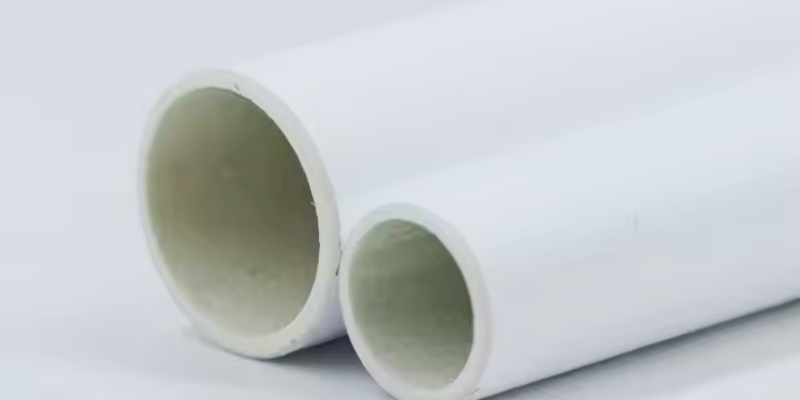
Thick Wall Fiberglass Tube: A Comprehensive Applications
Advantages of Fiberglass Scaffolding
Fiberglass scaffolding has become an indispensable tool in the construction industry, providing a series of compelling advantages over traditional materials. Central to its design is the use of thin wall fiberglass tube, which contributes significantly to the scaffolding’s performance. Here are the foremost advantages of utilizing fiberglass scaffolding in construction projects:
- Lightweight Nature: The scaffolding’s lightweight feature, stemming from the thin wall fiberglass tube technology, allows for easy handling, transportation, and setup. This not only cuts down labor costs and time but also minimizes occupational health risks associated with heavy lifting.
- Enhanced Durability: Fiberglass’s inherent resistance to wear and environmental elements means it can withstand harsh conditions without deteriorating. Its ability to resist corrosion and rust extends its service life, making it a cost-effective solution for long-term projects.
- Non-Conductivity: The non-conductive nature of fiberglass is a critical safety advantage, especially when working in proximity to electrical hazards. By eliminating the risk of electrical shocks, it creates a safer working environment for construction personnel.
- Resistance to Corrosion: The integration of thin wall fiberglass tube in scaffolding structures ensures excellent resistance to corrosive substances and environments. This property is invaluable in projects exposed to chemical agents or in coastal areas where saltwater can significantly impact metal scaffolding.
- High Strength-to-Weight Ratio: Despite its lightweight, fiberglass scaffolding can support substantial loads, a characteristic attributed to its high strength-to-weight ratio. This capability enables workers to operate safely with heavy equipment and materials.
- Minimal Maintenance Requirements: The durability and corrosion resistance of fiberglass scaffolding translate to minimal maintenance needs, reducing both costs and downtime associated with scaffolding upkeep.
- Thermal Insulation: Fiberglass provides inherent thermal insulation, making it better suited for work in extreme temperatures. This benefit can enhance worker comfort and may protect temperature-sensitive materials on the scaffold.
- Ease of Assembly: Thanks to its modular design and the use of manageable thin wall fiberglass tube components, fiberglass scaffolding is straightforward to assemble and disassemble. This efficiency accelerates project timelines by facilitating quick scaffold setup and removal.
- Versatility: The versatility of fiberglass scaffolding lies in its adaptability to various project needs. Its modular nature allows for easy customization, capable of configuring to suit specific requirements, from straightforward designs to complex structures.
- Improved Safety Features: Fiberglass scaffolding is engineered with safety in mind, featuring non-slip surfaces, fire resistance, and low conductivity. These attributes collectively reduce the potential for workplace accidents and injuries.
- Eco-Friendly: It is a more sustainable option than many alternatives, featuring materials that have a longer lifecycle and are recyclable. This eco-friendliness aligns with green construction initiatives, helping projects to reduce their environmental footprint.
The incorporation of thin wall fiberglass tube technology not only enhances the lightness and strength of the scaffolding but also contributes to its environmental resistance and durability. The broad array of benefits provided by fiberglass scaffolding, particularly in terms of safety, efficiency, and sustainability, makes it an exceptional choice for contemporary construction projects, where these qualities are increasingly prioritized.
Thin Wall Fiberglass Tube for Varied Uses
Thin wall fiberglass tubes are utilized across a wide range of industries due to their unique combination of strength, durability, and versatility. Here are the key uses:
Aerospace and Automotive Applications
- Structural Components: Used in lightweight frameworks for drones, aircraft, or automotive parts to enhance efficiency without adding weight.
- Exhaust Systems: Fiberglass tubes resist high temperatures, making them ideal for heat insulation.
- Custom Aerodynamic Parts: Designed for applications where weight reduction and high strength are essential.
Electrical and Electronics
- Cable Protection: Serve as protective sleeves for wiring systems, preventing damage and electrical hazards.
- Insulation Tubes: Act as thermal and electrical insulators in high-voltage environments.
- Components in Transformers or Switchgear: Non-conductive and heat-resistant properties make them suitable for electrical assembly.
Marine and Outdoor Environments
- Boat Masts and Poles: Lightweight and corrosion-resistant, ideal for marine settings.
- Structural Reinforcements: Used in dock construction, handrails, and ladders in harsh, saline conditions.
- Antenna Supports: Durable and resistant to environmental exposure.
Sports and Recreational Equipment
- Fishing Rods and Arrows: Their flexibility and strength make them a perfect fit.
- Tent Poles and Camping Gear: Lightweight yet sturdy for easy transport and durability.
- Ski Poles or Sports Barriers: Ideal for high-impact activities.
Industrial Applications
- Pipeline Linings: Used in corrosive environments like chemical plants and refineries.
- Industrial Rollers: Provide smooth operation with resistance to wear and tear.
- Machinery Components: Serve as lightweight, durable parts in manufacturing equipment.
Construction and Architectural Uses
- Scaffolding and Reinforcements: Strong and lightweight for easy assembly and support.
- Aesthetic Features: Used in modern architectural designs for structures and facades.
- Building Insulation: Acts as a thermal barrier in buildings.
Renewable Energy Sector
- Wind Turbine Blades: Strength and durability make them suitable for high-stress applications.
- Solar Panel Supports: Lightweight and corrosion-resistant to withstand prolonged outdoor exposure.
Medical Applications
- Support Structures in Devices: Used in lightweight medical frames and diagnostic equipment.
- Non-Magnetic Components: Perfect for environments requiring non-interference with medical imaging.
Agricultural and Environmental Uses
- Greenhouse Frameworks: Resistant to moisture and weather conditions, making them ideal for farming applications.
- Irrigation Systems: Used in lightweight and durable tubing for water management.
Why They’re Preferred
Thin wall fiberglass tubes are ideal wherever strength, lightweight construction, and resistance to environmental factors are needed. Their adaptability ensures they remain a key material in countless innovative designs and applications.
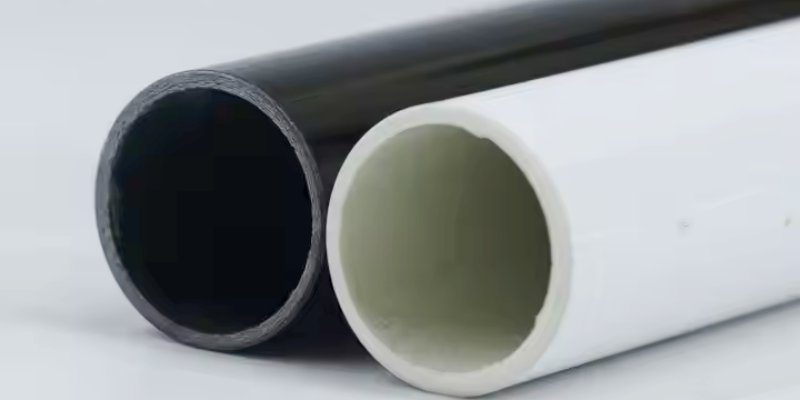
Sizing Options for Every Project
Selecting the right size for scaffolding is crucial for ensuring safety and efficiency on a construction site. With thin wall fiberglass tube technology, a broad range of sizing options becomes available, enabling adaptation to virtually any project’s unique demands. Below, discover the common scaffold tube dimensions and guidance on choosing the appropriate size for your specific project needs.
Common Fiberglass Scaffolding Tube Sizes
- Diameter Variations: Thin wall fiberglass tubes typically come in a variety of diameters, from 1 inch to over 2 inches, allowing for selected sturdiness and weight-bearing capacity according to project requirements.
- Length Options: These tubes are available in multiple lengths, with standard sections ranging from 6 feet to 10 feet, which can be used individually or joined for greater spans.
- Custom Lengths: For projects requiring specific measurements, custom lengths can be cut to size, ensuring that your scaffold fits perfectly without the need for modification.
- Wall Thickness: While the term “thin wall” suggests a single standard, the wall thickness of fiberglass tubes can vary, offering a balance between lightness and load-bearing ability.
- Adjustable Sizes: Adjustable scaffolding components featuring telescoping thin wall fiberglass tubes allow for precise height modifications, accommodating uneven ground or varying working heights.
- Tube Shape & Modularity: Beyond round tubes, there are also square and rectangular options that can influence the strength and configuration of the scaffolding, as well as modular systems that fit together seamlessly.
Tips on How to Select the Right Size for Specific Project Needs
- Assess Load Requirements: Examine the weight of workers, equipment, and materials that will be supported. Ensure the chosen thin wall fiberglass tube diameter and wall thickness corresponds to these load demands.
- Evaluate Working Height: The higher the work area, the more critical the structural integrity of your scaffolding. Select the appropriate tube length and consider adjustable or telescoping options for precise height management.
- Consider Work Area Dimensions: If the project covers a large area, longer tubes may minimize the number of required supports and joints, enhancing stability.
- Factor in Weather Conditions: Areas with high winds or inclement weather may require scaffolding with a larger diameter and thicker walls for added stability.
- Check for Modularity: Modular systems allow for flexibility and ease of assembly. Ensure components are compatible and can be securely locked together.
- Understand the Terrain: Uneven terrains will need adjustable sizing options that can compensate for ground irregularities without compromising safety.
- Review Frequency of Reconfiguration: Projects that necessitate frequent scaffold reconfiguration may benefit from lightweight, easy-to-handle sizes.
- Assess Accessibility Needs: In locations with limited access, smaller, more manageable sections of scaffolding may be necessary to securely navigate the space.
- Prioritize Safety: Always choose sizes that meet or exceed safety standards for the expected loads and conditions.
- Consult with Professionals: When in doubt, seek expert advice—professional engineers can provide insights into the most suitable sizing for your project.
- Consider Storage and Transport: Larger lengths may require special transportation and storage solutions, which should be taken into account during selection.
- Explore Custom Solutions: If standard sizes do not fit your project, inquire about custom-cut thin wall fiberglass tubes to meet unique dimensional demands without compromising performance.
- Plan for Future Use: If the scaffolding will be used across multiple projects, consider a size that offers versatility and can be adapted to various settings.
By taking into account the above points, you’ll be well-equipped to choose the right thin wall fiberglass tube dimensions for your project, balancing safety, versatility, and cost-effectiveness.
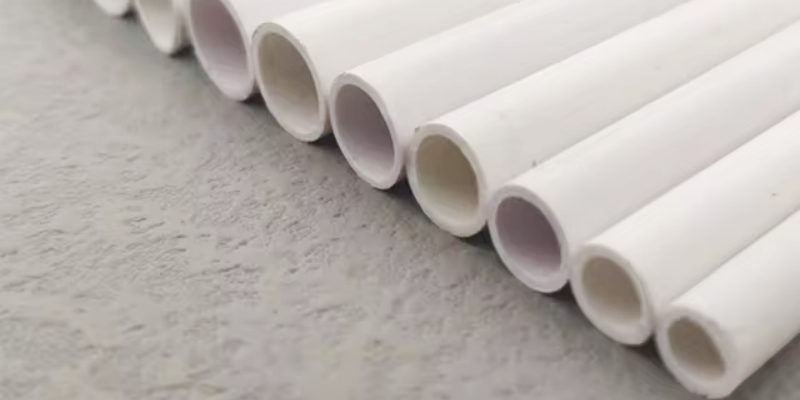
Manufacturing Process of Thin Wall Fiberglass Tube
The manufacturing process of thin wall fiberglass tubes involves precision techniques to ensure the final product is lightweight, durable, and tailored for its intended use. The most commonly employed methods are pultrusion, filament winding, and resin transfer molding (RTM). Below is an outline of these processes:
Pultrusion Process
The pultrusion method is widely used for producing continuous lengths of fiberglass tubes with consistent cross-sections.
Steps
- Material Preparation
- Fiberglass rovings (continuous strands of glass fibers) and mats are arranged as the reinforcing material.
- A thermosetting resin (e.g., polyester, epoxy, or vinyl ester) is prepared as the matrix.
- Impregnation
- The fiberglass is drawn through a resin bath to ensure thorough saturation with the resin.
- Shaping
- The saturated fibers pass through a preforming guide and then into a heated die that shapes the tube and sets the resin.
- Curing
- Inside the die, the resin cures (hardens) under heat and pressure, forming the rigid tube.
- Cutting and Finishing
- The tube is pulled continuously through the die and cut to the desired length.
Filament Winding Process
This method is used for creating tubes with high strength and precise fiber orientation.
Steps
- Mandrel Preparation
- A mandrel (a cylindrical mold) is prepared as the base for winding fibers.
- Fiber Winding
- Continuous glass fibers are coated with resin and wound around the rotating mandrel in precise patterns (e.g., helical or circumferential).
- Curing
- The wound fibers are cured either at room temperature or in an oven to harden the resin.
- Mandrel Removal
- After curing, the mandrel is removed, leaving behind the hollow fiberglass tube.
Resin Transfer Molding (RTM)
RTM is a closed-mold process used for producing highly accurate, complex shapes, including thin wall tubes.
Steps
- Mold Setup
- A mold is prepared with the desired shape of the tube. Fiberglass reinforcement is placed into the mold.
- Resin Injection
- Resin is injected under pressure into the mold, saturating the fiberglass material.
- Curing
- The mold is heated to cure the resin, forming the tube.
- Demolding and Finishing
- The cured tube is removed from the mold, trimmed, and polished as needed.
Hand Lay-Up Process (For Prototyping or Low Volume Production)
This manual method is often used for custom or small-scale production of fiberglass tubes.
Steps
- Mandrel or Mold Preparation
- A mandrel or mold is prepared and coated with a release agent.
- Layering Fiberglass and Resin
- Fiberglass fabric or mats are layered over the mold, with resin applied to each layer.
- Curing
- The tube is allowed to cure at room temperature or in a curing chamber.
- Demolding and Finishing
- Once hardened, the mold is removed, and the tube is trimmed and polished.
Key Factors in Manufacturing
- Material Selection:
fiberglass type, resin type, and additives are chosen based on application requirements (e.g., strength, temperature resistance, or UV resistance). When selecting materials, it’s also important to consider the compatibility of fiberglass tube end fittings, ensuring they match the type of fiberglass used for a secure and leak-proof connection. - Wall Thickness Control:
Precise control during shaping and curing ensures uniform thin walls. - Quality Assurance:
Tubes are inspected for defects such as voids, uneven thickness, or weak spots.
By combining advanced manufacturing techniques with high-quality materials, thin wall fiberglass tubes are crafted to meet the stringent demands of various industries.
Where to Find Fiberglass Scaffolding Tubes
Finding the right thin wall fiberglass tube for your scaffolding project can be a breeze with the correct information and resources. Whether you’re pondering the benefits of online versus in-store purchasing or simply looking for the most reliable source near you, this guide will help you navigate through your options and make a well-informed decision.
Guide to Sourcing Fiberglass Scaffolding Tubes Near You
- Local Construction Material Suppliers: Many times, these suppliers have a variety of scaffolding tubes, including thin wall fiberglass tubes, due to their frequent use in construction projects.
- Specialized Scaffolding Vendors: Shops focusing specifically on scaffolding materials are more likely to offer a wider range of sizes and custom options for thin wall fiberglass tubes.
- Trade Shows and Conventions: These events can provide access to the latest advancements in construction materials, including innovative thin wall fiberglass tube options.
- Referrals from Construction Professionals: Often, professionals in the construction industry can recommend reputable local suppliers or vendors for specific scaffolding needs.
- Industrial Material Wholesalers: These outlets typically carry a broad assortment of construction materials, including fiberglass tubes, and may offer competitive pricing for bulk purchases.
- Recycling or Reclamation Yards: For eco-conscious projects, sourcing recycled thin wall fiberglass tubes from these facilities can be both cost-effective and sustainable.
Online vs. In-Store Options: Pros and Cons
| Aspect | Online Purchasing | In-Store Purchasing |
|---|---|---|
| Selection | Broad, with access to multiple suppliers. | Limited to the inventory of local stores. |
| Convenience | Shop from anywhere, anytime. | Instant procurement without waiting for shipping. |
| Pricing | Potentially lower due to competition and lower overhead costs. | Prices can be higher, but there’s room for negotiation. |
| Expert Advice | Varied; dependent on the website's customer service. | Direct access to experts and personalized advice. |
| Shipping Costs | Additional costs apply, but some retailers offer free shipping. | No shipping costs, although transportation may be needed for large orders. |
| Return Policy | Policies vary; returns can be more challenging. | Easier to return or exchange products directly. |
| Product Inspection | Cannot inspect the product before purchase. | Allows for physical inspection before buying. |
Choosing between online and in-store options when sourcing thin wall fiberglass tube for your scaffolding project involves weighing these factors carefully. Online shopping offers a larger selection and the convenience of shopping from any location, while shopping in-store provides the advantage of directly inspecting the products and receiving expert guidance. Ultimately, the choice should align with your priorities, such as cost, convenience, and the level of assurance you require before making a purchase.
The Costs of Thin Wall Fiberglass Tube for Scaffolding
When planning a budget for your construction or renovation project, understanding the costs associated with thin wall fiberglass tubes for scaffolding is vital. The following guide provides a general overview of what to consider when estimating the expense of these materials. It is important to remember that prices can fluctuate based on a variety of factors including market demand, manufacturer, and regional variations.
How to Choose the Right Tapered Fiberglass Tube Size
General Pricing Guide for Fiberglass Scaffolding Tubes
- Material Quality: Higher-quality thin wall fiberglass tubes usually command a premium price due to their superior strength and durability.
- Tube Dimensions: The cost can vary significantly depending on the length, diameter, and wall thickness of the tube.
- Quantity Ordered: Ordering in bulk often attracts discounts, while purchasing a small quantity may result in a higher price per unit.
- Manufacturer: Some manufacturers may offer competitive pricing based on their production capabilities and economies of scale.
- Customizations: Custom dimensions or features like UV protection, color, and surface texture can add to the cost.
- Market Trends: The prices of raw materials such as resin and glass fiber can cause fluctuations in the price of thin wall fiberglass tubes.
- Transportation Costs: Long-distance shipping can introduce significant costs, especially for large and bulky orders.
- Retail vs. Wholesale: Wholesale prices are generally lower compared to retail, but this usually requires larger minimum purchases.
- Regional Factors: The cost can also be influenced by the geographic location due to factors such as local taxes, tariffs, and availability.
- Installation Accessories: Don’t forget the cost of clamps, braces, and other accessories needed for the installation of the scaffolding tubes.
- Economic Conditions: Inflation, exchange rates, and other economic variables can impact the bottom line.
- Longevity and Maintenance: While upfront costs matter, consider the longer-term savings afforded by the low maintenance and long lifespan of high-quality thin wall fiberglass tubes.
- Supplier Reputation: Established suppliers with good reputations may charge more but often provide better customer service and guarantees.
Investing in thin wall fiberglass scaffolding tubes calls for careful financial planning, taking into account these varied cost factors. It’s essential to seek out multiple quotes and compare options from different suppliers to ensure you get the best value for your investment. Although the initial costs might seem steep, the benefits of durability, strength, and maintenance savings can make thin wall fiberglass tubes a cost-effective choice in the long run.
Spotlight on GangLong Fiberglass Fiberglass Scaffolding and Thin Wall Fiberglass Tube Solutions
GangLong Fiberglass has emerged as a key player in the scaffolding industry, particularly known for their innovations in thin wall fiberglass tube scaffolding solutions. We focus on constructing lightweight, durable, and safe scaffolding has garnered attention from construction companies and project managers worldwide.
Introducing GangLong Fiberglass as a Notable Provider
- Specialized Production: We specialize in producing high-quality thin wall fiberglass tubes which form the core of modern and efficient scaffolding systems.
- Advanced Materials: At GangLong Fiberglass, we utilize state-of-the-art materials and cutting-edge technologies to ensure each thin wall fiberglass tube surpasses rigorous standards for strength and performance.
- Customized Solutions: We tailor our products to meet specific project requirements, offering customized lengths and dimensions to fit a variety of scaffolding designs seamlessly.
- Industry Compliance: All our thin wall fiberglass tubes comply with the strictest industry safety and performance regulations.
- Environmental Responsibility: We are committed to reducing our ecological footprint. Our products are designed to be environmentally friendly, utilizing recyclable materials to minimize waste.
- Wide Reach: We service a global market, maintaining efficient distribution networks to ensure the timely delivery of our scaffolding products.
- Competitive Pricing: We balance quality with cost-effectiveness. Our thin wall fiberglass tubes represent an excellent value proposition to the construction industry.
- Customer Service: At GangLong Fiberglass, we pride ourselves on our dedicated customer service team ready to assist clients with their orders and provide expert advice on the best scaffolding solutions.
Features and Benefits of Opting for GangLong Fiberglass Products
- Lightweight Design: Our thin wall fiberglass tubes are significantly lighter than traditional metal scaffolding, facilitating easier transport and faster assembly.
- High Durability: Despite their lightweight nature, our tubes exhibit high durability, resisting wear and tear from environmental elements and repetitive use.
- Corrosion Resistance: Unlike metal, fiberglass does not corrode, making our tubes ideal for use under harsh weather conditions and in environments with corrosive substances.
- Non-Conductive Material: The insulating properties of fiberglass ensure that our products are safe for use in electrical environments.
- Strength-to-Weight Ratio: Our thin wall fiberglass tubes provide an excellent strength-to-weight ratio, ensuring stability and support while being easy to maneuver.
- Low Maintenance: The longevity and low maintenance requirements of our tubes help reduce the overall scaffolding upkeep costs.
- Thermal Resistance: Our tubes maintain their integrity across various temperature extremes, avoiding issues of thermal expansion common in metal scaffolding.
- Streamlined Installation: We focus on user-friendly designs that expedite on-site assembly and disassembly, boosting overall project efficiency.
By spotlighting the innovative solutions offered by providers like GangLong Fiberglass, we can appreciate the advancements in thin wall fiberglass tube technology and its impact on the scaffolding industry. These developments are indicators of the evolving nature of construction and the ongoing pursuit of safer, more efficient building practices.
Successful Applications and Case Studies of Thin Wall Fiberglass Tube Scaffolding
The utilization of thin wall fiberglass tube scaffolding has been instrumental in advancing construction and maintenance projects across various industries. These real-world examples not only demonstrate the versatility of fiberglass scaffolding tubes but also serve as case studies for their successful applications:
- Maritime Shipping Maintenance: A leading maritime company utilized thin wall fiberglass tube scaffolding for the maintenance of its shipping fleet. The non-corrosive property of the tubes ensured durability even in the high-salt environment.
- Industrial Chemical Plants: Chemical plants often face issues with corrosion due to the harsh substances used in processing. Fiberglass scaffolding provided a resilient, non-reactive solution, maintaining structural integrity where metal alternatives would fail.
- Electrical Utility Companies: A national electrical grid operator chose thin wall fiberglass tube scaffolding for its non-conductive properties, ensuring the safety of workers during the maintenance of high-voltage installations.
- Historical Monument Restoration: Restoration efforts for ancient structures require non-invasive support systems. Thin wall fiberglass tubes were utilized in one such project, offering necessary support without the risk of chemical reactions with delicate materials of the monument.
- Large-Scale Event Staging: For a globally televised sporting event, the organizers implemented fiberglass scaffolding to quickly erect and dismantle extensive staging areas. This also provided the benefit of lightness and ease of transport.
- Commercial Aircraft Hangars: Fiberglass scaffolding was chosen by a prominent aerospace company for use in their aircraft hangars due to its strength and reduced weight, improving efficiency and worker safety during airplane maintenance.
- Metro Station Construction: During the construction of a new metro station, contractors implemented thin wall fiberglass tube scaffolding for its easy assembly and the ability to withstand the urban environment, demonstrating its robustness and user-friendly design.
These examples underscore the effectiveness of thin wall fiberglass tube scaffolding, offering insights into their practical benefits and the innovative opportunities they provide in various fields that require safe, reliable, and efficient scaffolding solutions.
Top Benefits of Using Silicone Fiberglass Tube in Equipment
FAQs about Thin Wall Fiberglass Tube
Thin wall tubes refer to tubing with a wall thickness that is significantly less relative to its diameter. In the context of fiberglass tubes, a thin wall is usually defined by the ratio of the tube’s external diameter to its wall thickness. Although specific dimensions can vary depending on the application and manufacturer, generally, a tube is considered to have a “thin wall” if the wall thickness is less than 1/10th of the tube’s diameter. This characteristic makes thin wall tubes lighter and somewhat more flexible, while still maintaining a degree of strength and rigidity. Thin wall tubing finds diverse applications across industries because it provides an ideal balance between weight and performance, especially in scenarios where reducing overall weight is crucial without substantially sacrificing structural integrity.
Fiberglass tubes are highly versatile and used in a range of applications across various industries. Their high strength-to-weight ratio, resistance to corrosion, and non-conductive properties make them particularly valuable. For instance, in the aerospace and automotive sectors, they serve as structural components, providing strength without adding significant weight. In electrical and telecommunications industries, fiberglass tubes are prized for their excellent insulating properties, often used as protective housing for wires and cables. In construction, they can be seen as scaffolding poles or as forms for concrete structures because of their durability and resistance to environmental factors. Recreational industries utilize fiberglass tubing in the manufacturing of tent poles, bicycle frames, and even in specialized applications like kite and drone framing. Through the combination of their lightweight, strength, and resistance to corrosion, fiberglass tubes fulfill crucial roles in multiple domains.
Cutting a fiberglass tube requires preparation and the correct tools to ensure a clean, safe cut. Firstly, it’s essential to wear protective gear, including a dust mask, safety goggles, and gloves, to protect against fiberglass particles. Use a sharp, fine-toothed saw blade, such as a hacksaw or a jigsaw with a fiberglass cutting blade, to achieve a smooth edge. Mark your cutting line clearly on the tube with a marker. To minimize splintering and ensure a straight cut, apply a strip of painter’s tape along the marked line. Secure the tube firmly in a vise or with clamps to prevent it from moving. When cutting, use steady, controlled movements to gradually saw through the tube. Take care not to apply excessive force, as this can cause the fiberglass to splinter. After cutting, smooth the cut edges with fine-grit sandpaper to remove any sharp or rough spots, ensuring to wear your protective gear throughout the entire process.
Fiberglass tubing is renowned for its remarkable strength, often comparable to, or exceeding, that of some metals when considering its weight-to-strength ratio. It is comprised of fiberglass strands embedded in a resin matrix, creating a composite material that is both lightweight and extremely durable. Fiberglass tubes can withstand significant loads, impacts, and bending forces, making them ideal for applications requiring strength without the weight burden of metal. Furthermore, they exhibit excellent resistance to corrosion, temperature fluctuations, and chemical exposure, maintaining their integrity over a wide range of harsh conditions. The specific strength of fiberglass tubing can vary depending on the manufacturing process, the orientation of the fiberglass strands, and the types of resin used, allowing for customization to meet the demands of various applications. Overall, the superior strength characteristics of fiberglass tubing, coupled with its other advantageous properties, make it a preferred choice for many engineering and industrial applications.

As the editor of GangLong Fiberglass, I have years of experience and in-depth research, focusing on cable tray products, fiberglass solutions, and grille systems. I incorporate years of industry insights and practical experience into every content, committed to promoting the progress of the industry. At GangLong Fiberglass, my commitment is reflected in every product, from innovative cable trays to durable fiberglass solutions and sturdy grille systems. As an authoritative voice in the industry, my goal is to provide valuable information to professionals and businesses and promote forward-looking solutions.

